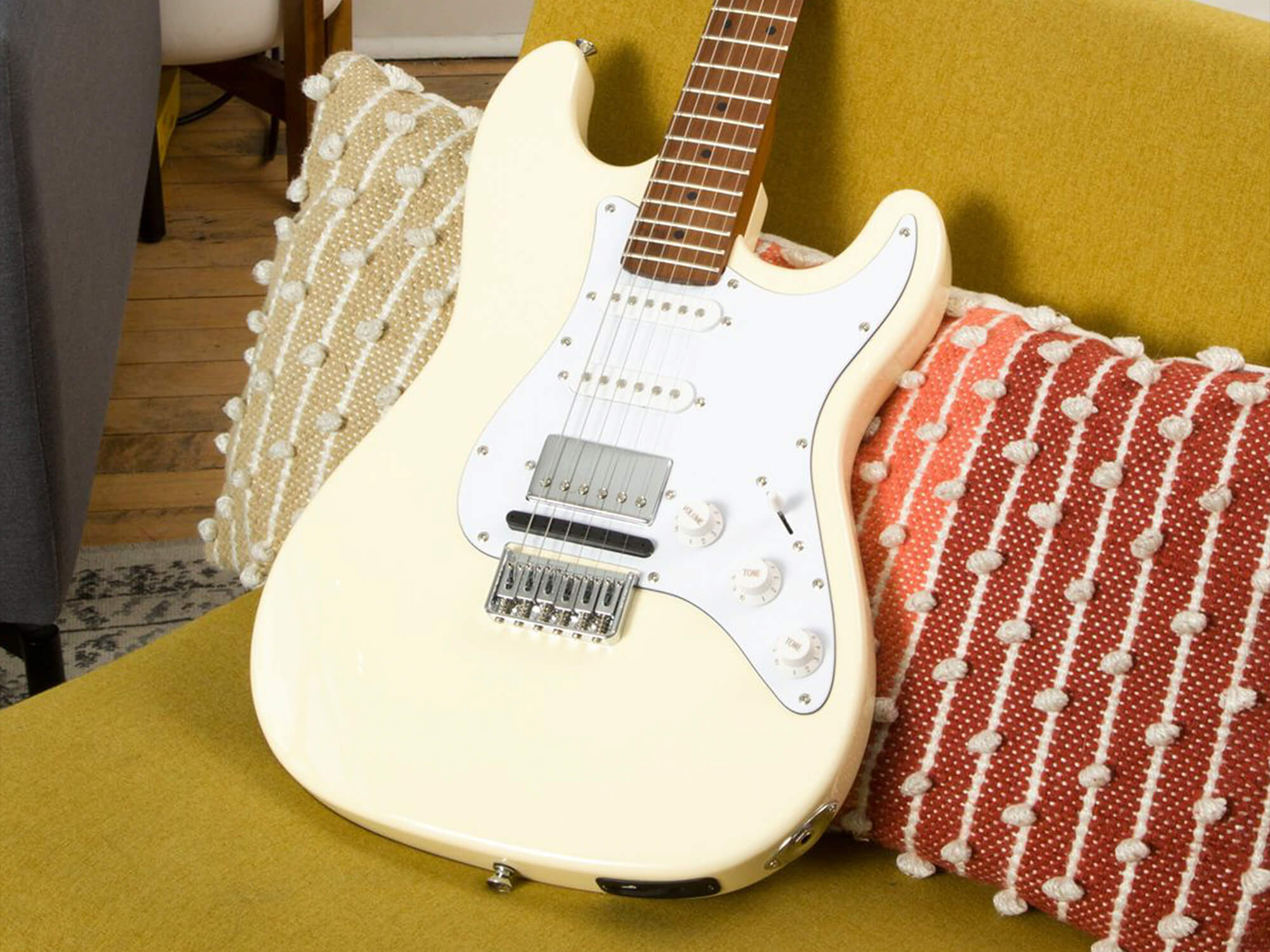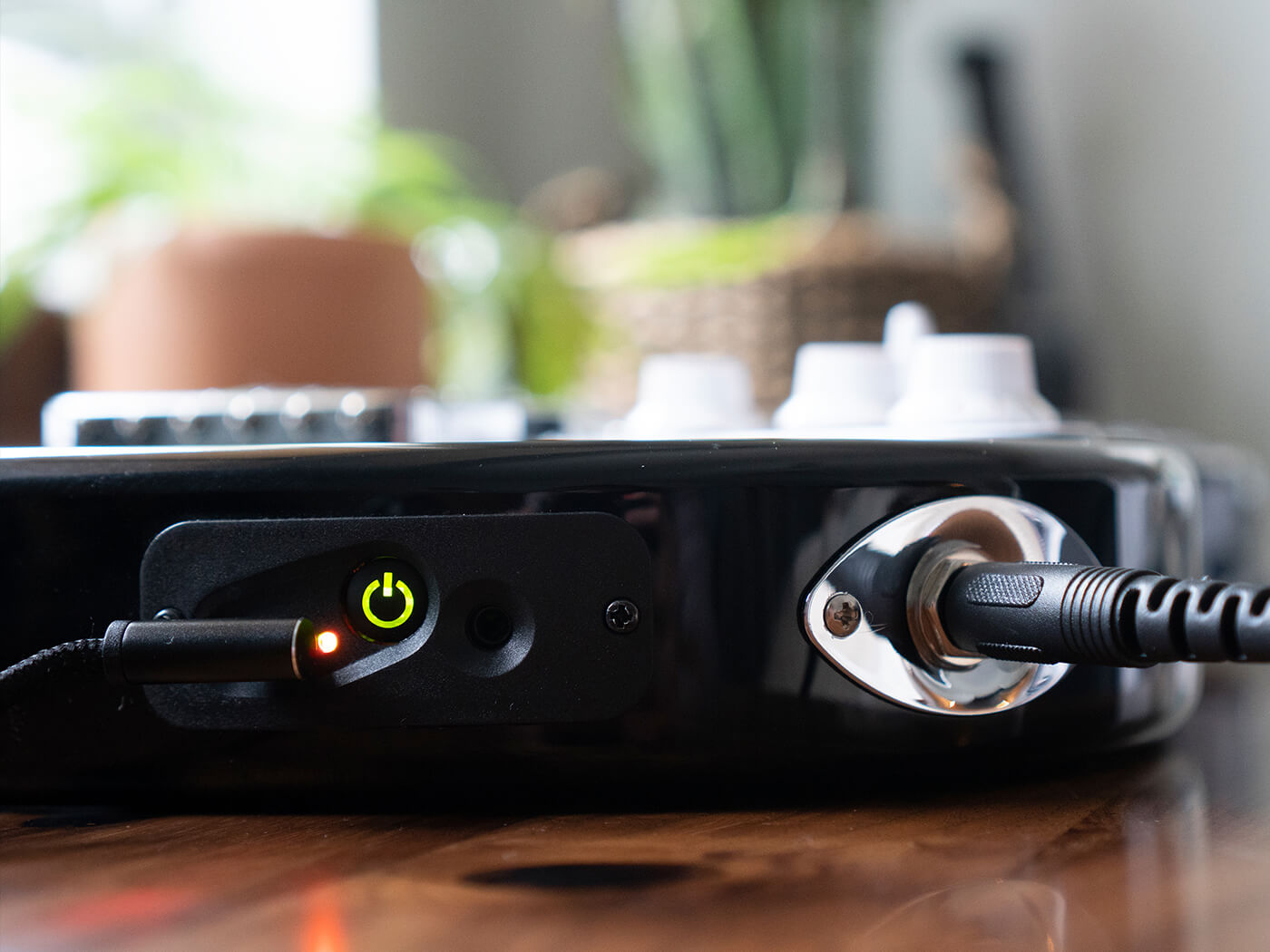Related Tags
Jamstik Classic Review: a MIDI guitar that doesn’t look quite so modern
Jamstik’s plonked its MIDI tech into a full-size guitar – there’s a headstock and everything! How does it fare, though, now that it feels less like a ‘smart’ guitar?

Jamstik Classic
Review Overview
Our rating
7
Our verdict
$999/£999, www.jamstik.com
A few years ago, Jamstik launched the Studio MIDI – a full-scale (but headless) guitar, that integrated a hexaphonic MIDI pickup and lots of connectivity. It was a pretty cool tool – however, for some no amount of cool would be enough to overcome the heinous crime of being headless. But we now have the Jamstik Classic MIDI, a decidedly more Stratocaster-like thing fitted with the same hexaphonic MIDI-controlling technology as its predecessor. Could it convince you to join the world of MIDI guitars, or does it end up stuck between two approaches?
Sliding it out of the box, the most visually striking thing about the guitar is no longer the lack of the headstock. Now, it’s the very dark roasted maple neck. Our review guitar is finished in vintage cream, and the result is a pretty classy Strat-style vibe that, at the same time, kinda makes me want some chocolate-chip ice cream.
Outside of the MIDI-enabling hexaphonic pickup, the electronics are standard HSS S-style stuff, down to its blade switch and one volume, two-tone control layout. But there are some specs that take it away from a traditional S-type, such as the brass nut, and (mercifully for the MIDI calibration) a six-saddle hardtail rather than a vibrato.
So on the surface it looks nice enough, but more importantly it’s less obviously a MIDI instrument at a distance compared to the Studio MIDI. Which is, presumably, the point. It’s for the player intrigued by the capabilities of the MIDI tech, but who’s not willing to give up the familiar feel of a ‘normal’ guitar for whatever reason. Let’s dive into how well it performs.
As a MIDI controller
Evaluating the Jamstik Classic is kind of evaluating two instruments: one, a MIDI controller built around a guitar. The other, a guitar built around a MIDI controller. So let’s start the first way around, focusing on the digital side of things as the primary driver.
The Jamstik features an eighth-inch MIDI jack, Bluetooth connectivity and USB-C, meaning you can control basically any MIDI thing with it. But Jamstik’s own software (both a standalone app and DAW plugin) is the main event, set up out of the box to handle the idiosyncrasies of a hexaphonic guitar pickup.
This Jamstik Creator software is also where you can adjust the behaviour of the guitar’s overall MIDI output – things like how far pitch-bends will go, or whether or to send a note’s envelope as separate velocity info. Despite MIDI being a universal standard, various soft synths respond differently to the same MIDI data, and so some will work with the guitar right off the bat, and some won’t. This isn’t a mark against Jamstik, this sort of thing comes with the territory: any MIDI device will require setup and experimentation to get things working.
The software can tweak a lot about the guitar’s behaviour. For instance, you can just turn bends off entirely – handy if you’re, say, playing the piano, as unless you’re going past one on a train it’s not an instrument known for sudden pitch modulation. Given that you’ll likely need to do some tweaking, it’s therefore nice that the process for adjusting things is smooth – the app syncs changes to the guitar instantly, and the UI is clear and easy to navigate.

Setup complete, playing synths via the guitar is, well, a lot of fun. Playing the piano, the harp, a buzzy squarewave or a Vangelis-like cyberpunk synth pad with a guitar is a pretty surreal experience. Unsurprisingly, the best experience is offered through Jamstik’s own software – all of the sounds are designed specifically for the instrument, and therefore just kind of suit being played by it.
There’s a large bank of presets to get you started, but you can also create patches from the building blocks of the included samplers, oscillators and effects. The synth sounds aren’t revolutionary, but they do cover a whole lot of ground – and more sounds are available to purchase.
The tracking, while not perfect, is damn good, and a far sight better than you’ll get with a synth pedal and a regular pickup. As we noted when we looked at this instrument’s predecessor, the most impressive thing here is bending. If you’ve been playing for any amount of time, you’ll have an instant feedback loop between your ears and your hands that stops your brain from having to think about keeping a bend in tune. And having that kick in while being able to hear a synth sound is, well, pretty strange.
But that’s exactly the point of tech like this. The tracking is good enough that, after having spent some time with it, I’d be ok using it live in the right circumstances, but I think the abilities it grants to the average guitarist are more revelatory for the home studio. Because in composing and producing at home, you’re likely going to need to tell a soft synth what to do. But present the average guitarist with the most popular method of turning a musical idea into MIDI data – a keyboard – and there’s a chance they’ll unleash a blood-curdling scream and skitter out of the room on all fours.
The Jamstik, however, lets guitarists use their actual musical vocabulary here instead, as opposed to having to amateurishly pad away at a MIDI keyboard or click-and-drag notes into a piano roll. Neither feel particularly expressive, but here, a sense of musical language remains. I for one don’t have a clue what a minor ninth looks like on a keyboard – but I do on a fretboard. That’s the handiest thing about this tech, for me at least: it opens up a real, viable avenue between guitarists and the huge, expansive world of plugins and virtual instruments.
And with the Classic formula, Jamstik has built that tech into a guitar that feels more ‘normal’, and hence even more familiar to most players. So why don’t we have a look at that side of things, then? Swapping over to looking at it like a guitar built around a MIDI controller, how does it fare?

As a guitar
At $999, the Jamstik Classic is priced in at least the same ballpark as the various iterations of Fender’s Player and Vintera guitars. Unfortunately, the pure electric experience falls notably short of those. First, the neck feel: it is, and there’s no better way to say this, ‘cheap’. The frets are rough to bend on, and the finish is plasticky enough to feel much more Squier than Fender.
It’s hard to find info about the KD-branded pickups, but the single-coils certainly sound like affordable ceramics: there’s a crunchy, brittle attack at the front end, and an alarmingly bright character overall. It’s not all bad, though, as the bridge humbucker is much warmer, going some way to thaw the iciness of the Classic’s overall tone. Plus, the hardtail bridge and the brass nut are of good quality – the bridge is comfy, and both contributed to solid tuning stability
But it’s hard to judge the Jamstik Classic too harshly on its sub-par neck and single-coils. The MIDI tech has to be taken into account, both as part of the price tag and as what the “main focus” of the instrument is. Plus, if you’re in the market for a digital guitar, you may well be looking at it digital-first, analogue-second. And on those grounds, it does succeed.
However, the Classic, unlike the Studio, asks to be looked at like a ‘real’ instrument – other than a set-neck single-cut, what body shape evokes a general sense of guitarness more than an S-style? It’s by no means unusable, but it does fall short of the goal it sets itself of being a ‘proper’ guitar.
If you want an instrument that avoids this identity crisis but still does the same thing, the solution is obvious: Jamstik’s Studio MIDI is cheaper, and is far happier in its own skin. Playing that instrument, it seems to know that it’s a digital-forward studio tool. It doesn’t, as the Classic occasionally does, feel like an MPK Mini cosplaying as a grand piano.




